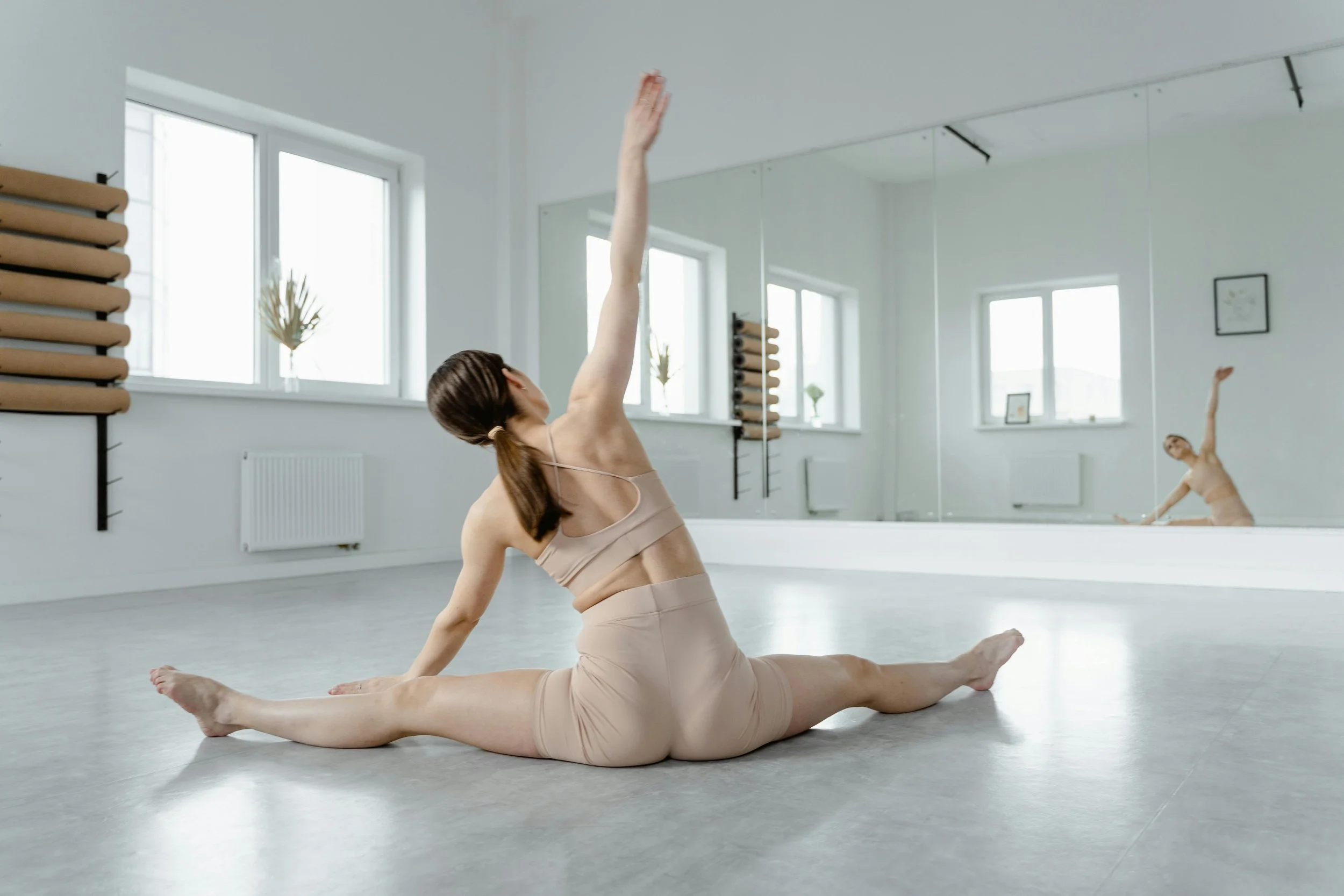5 Simple Ballet Stretches to Improve Your Flexibility. Plus: Simple Stretch Routine
Improving your flexibility doesn’t mean forcing yourself into painful positions. It’s about building length and releasing tension, by easing through consistent movement and mindful stretching. These five ballet-inspired stretches are gentle, effective, and perfect for beginners. Follow the step-by-step instructions and modifications to suit your body and build your flexibility gradually.
1. Forward Fold – Hamstring Release
Step-by-step:
Stand tall with your feet hip-width apart.
Inhale to lengthen your spine.
Exhale and slowly roll down from the top of your spine all the way as far as you can go.
Let your arms hang, or hold opposite elbows to relax the shoulders.
Hold for 30-60 seconds, breathing deeply.
Modification for beginners:
Bend your knees as much as needed and rest your hands on a chair or yoga blocks to take pressure off the lower back.
Ballet benefit: Supports leg extensions, balance, and forward bends with a longer line through the spine and hamstrings.
2. Seated Straddle Stretch – Inner Thigh Opener
Step-by-step:
Sit on the floor with legs extended wide in a comfortable straddle.
Keep your spine tall and feet flexed.
Walk your hands forward slowly, hinging from the hips.
Hold for 30-60 seconds.
Modification for beginners:
Sit on a folded blanket or cushion to lift the hips. Keep a gentle bend in the knees if needed.
Ballet benefit: Improves range of motion in second position and helps with turnout comfort.
3. Lunge with Side Reach – Hip Flexor and Side Body Stretch
Step-by-step:
Step your right foot forward into a lunge.
Keep your left leg straight behind you, heel lifted.
Inhale and lift your left arm overhead.
Exhale and gently reach towards the right side, keeping your chest open.
Hold for 30 seconds, then switch sides.
Modification for beginners:
Drop the back knee to the floor and place a cushion underneath for comfort. Keep the reach small and controlled.
Ballet benefit: Opens tight hips for arabesques, helps with core stability and graceful side bends.
4. Standing Quad Stretch – Front Thigh Release
Step-by-step:
Stand tall and engage your core.
Shift your weight onto one leg and bend the other knee.
Hold your foot behind you with the same-side hand.
Keep knees close together and hips level, ensure your pelvis isn’t tilted anteriorly.
Hold for 30 seconds, then switch legs.
Modification for beginners:
Use a chair, wall, or barre for balance. If holding your foot is tricky, loop a towel or resistance band around your ankle to gently guide it up.
Ballet benefit: Loosens tight quads and improves fluidity in jumps and balances.
5. Cat-Cow – Spinal Mobility and Core Awareness
Step-by-step:
Start on hands and knees in a tabletop position.
Inhale – arch your back, lift your head and tailbone (Cow).
Exhale – round your spine, tuck your chin and tailbone (Cat).
Repeat slowly for 5 to 8 rounds, moving with the breath.
Modification for beginners:
Place a folded blanket under your knees if needed. Keep the movement small if you’re new to spinal mobility.
Ballet benefit: Enhances posture, control, and fluid transitions through the upper body.
Suggested Beginner Stretching Routine
You can complete this routine in 10 to 15 minutes. Try it three times a week to start seeing real changes in flexibility and ease of movement.
Routine:
Warm up: Gentle walk or 10 pliés in first position (2 minutes)
Forward Fold – 30 seconds
Seated Straddle Stretch – 1 minute
Lunge with Side Reach – 30 seconds each side
Standing Quad Stretch – 30 seconds each leg
Cat-Cow – 5 to 8 rounds
Cool down: Deep breathing in a seated or lying position (1 minute)
Final thoughts:
Improving flexibility isn’t about pushing your body – it’s about working with it. These stretches are designed to feel good, not forced, and to support your journey into more graceful, confident movement.
If you’d like guided stretching routines and ballet-based fitness that’s friendly, welcoming, and beginner-safe, join us in our Sunday Stretch class with Chloe - or if you can’t make it you can watch our stretch classes with an on demand subscription with access to our video library.







